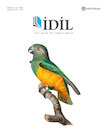TRADITION AND MODERNITY: THE FORMAL AND SYNTHESIS ELEMENTS OF K. PENDERECKI’S FLUTE CONCERTO
TRADITION AND MODERNITY: THE FORMAL AND SYNTHESIS ELEMENTS OF K. PENDERECKI’S FLUTE CONCERTO
Author(s): Filiz Karapinar, Manolis EkmektsoglouSubject(s): Music, Recent History (1900 till today), History of Art
Published by: Sanat ve Dil Araştırmaları Enstitüsü
Keywords: Penderecki; flute concerto; contemporary; synthesis;
Summary/Abstract: During the initial period of the 1990s, the majority of Penderecki's artistic creations were primarily focused on instrumental music, characterized by a noticeable tonal quality. The composer exhibited a keen inclination towards delving into the dramatic veracity of themes such as obscurity, mortality, trepidation, and malevolence in his previous compositions. During the time when the Concerto for Flute and Orchestra (1922) was composed, the composer's focus shifted from its somber character to a more general inclination towards brightness and softness. This concerto has a unique, heartfelt, and lyrical tone, and the form itself has special balance and classical proportions. This study investigates how the composer amalgamated diverse compositional methodologies from historical and contemporary periods, resulting in various frameworks in his composition of the flute concerto. The content of the study explores the musical principles that govern the assembly of discrete structural elements in the piece, including parameters such as form, scale structure, and texture as well as the hierarchical event structures. For the sake of comprehensibility, it is advisable for the reader to have the requisite musical score.
Journal: İdil Sanat ve Dil Dergisi
- Issue Year: 12/2023
- Issue No: 103
- Page Range: 329-335
- Page Count: 7
- Language: English

